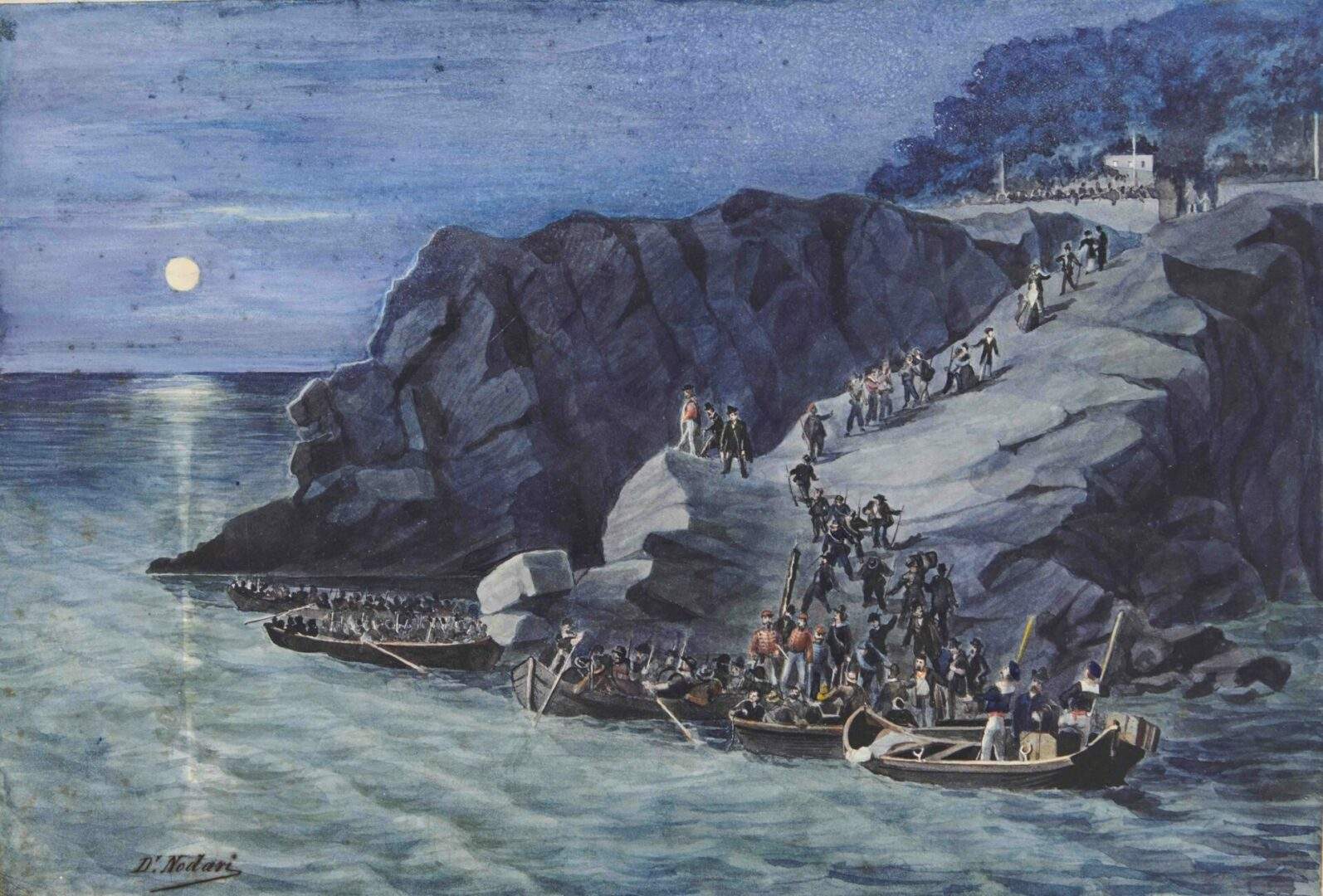An exhibition in Brescia recounts the Expedition of the Thousand through the paintings of Giuseppe Nodari
From January 27 to April 7, 2024, the Museum of Santa Giulia in Brescia is hosting an exhibition dedicated to a significant nucleus of works by Giuseppe Nodari (Castiglione delle Stiviere, 1841 - 1898), patriot, artist, and doctor originally from Castiglione delle Stiviere (MN). The narrative of the most celebrated feat of the Italian Risorgimento, outlined through Nodari’s works purchased directly from his heirs by theAMICHÆ Association in 2022, opens the celebrations for the first year of the new Museum of the Risorgimento Lioness of Italy in Brescia.
Twelve months in which the Museum has distinguished itself in the panorama of international museology-two awards have been given to it, precisely for the value of the path it proposes, a meeting point between the tradition of the collection museum and the narrative museum, capable of reading and interpreting contemporary issues starting from knowledge of the past, the Red Dot Award 2023 and theInternational Design Awards 2024-establishing itself as a necessary reality for the community, with 55.779 visitors, an extremely significant number especially when compared with the number of those, 7,270, who attended it in 2014, the last year before it closed.
The exhibition The Expedition of the Thousand. Memory and storytelling in the pictorial reportage of Giuseppe Nodari, curated by Giulia Paletti and Enrico Valseriati, promoted in synergy by the Municipality of Brescia, Fondazione Brescia Musei and the AMICHÆ Association., fully reflects the concept, the guideline of the Brescia Risorgimento Museum project, offering a notebook with drawings and pen notes related to the Expedition of the Thousand, and twenty watercolor plates with scenes depicting the most salient moments of the enterprise, in which Nodari participated in the first person. Alongside the watercolors, two pictorial proofs by the artist are on display: a portrait of Giuseppe Garibaldi and theSelf-portrait of Giuseppe Nodari at the Battle of Volturno.
The works are set up in the Fresco Rooms of the Santa Giulia Museum, an extremely barycentric place within the UNESCO Corridor route, accessible to all visitors, free of charge. A choice strongly desired by Fondazione Brescia Musei precisely because of the value of this exhibition, so that it may be an opportunity for the public to approach such a diriment historical period in contemporary history and may be a cue and an invitation for further study by continuing the visit to the Museo del Risorgimento Leonessa d’Italia.
The exhibition opens precisely with an in-depth look at the human story of Giuseppe Nodari, whose “artist’s soul” was also recognized by some of his fellow soldiers. After fighting at Solferino in 1859, Nodari, still a teenager and imbued with the enthusiasm resulting from the annexation of Lombardy to the Savoy Kingdom, joined the large group of young men who left Bergamo for Genoa to embark on the ship Lombardo, one of the two steamships, along with the Piedmont, used to reach Sicily from the rocks of Quarto.
Armed with pencils and notebooks, Nodari produced an extraordinary artistic reportage: the twenty watercolors on display in Brescia, characterized by a touching, vivid and non-rhetorical description of the stages that led from Quarto to the taking of Palermo, allow the visitor to immerse himself in the enterprise and to grasp the enthusiasm that animated the volunteers who took part. To enrich the historical reconstruction, aspects, anecdotes and curiosities, identified and compiled by historian Carlo Bazzani, are presented at the center of the itinerary. To complete the narrative, in the educational apparatus of the exhibition, Nodari’s vivid and detailed watercolors are placed in dialogue with other testimonies that helped build the historical memory of the popular Expedition.
On the one hand, with Brescian memoirs, which, through the words of Giuseppe Guerzoni, Giuseppe Cesare Abba and Giuseppe Capuzzi, constitute a primary source for contextualizing some of the episodes narrated graphically by Nodari. Also on display for the occasion are a painted portrait of Giuseppe Guerzoni and a bust of Giuseppe Cesare Abba, both from the collections of the Brescia Civic Museums.
On the other, photography, which contributed to the construction of a shared visual imagery and the definition of a new idea of Nation. Through a comparison of the early photographic incunabula of French reporters present in Sicily in 1860 and Nodari’s watercolors, it will be possible to appreciate his artistic sensitivity and meticulous attention to detail.
The most vivid and curious details of the watercolors will also be able to be appreciated in all their fullness thanks to a film, made by the textile company Eurojersey for the AMICHÆ Association.
The exhibition is accompanied by a booklet, which will be distributed free of charge, with texts by Carlo Bazzani, Giulia Paletti and Enrico Valseriati, and by numerous heritage education activities, curated by Fondazione Brescia Musei and dedicated to all audiences, including schools.
For all information, you can visit the official Brescia Musei website.
Pictured: Giuseppe Nodari, Departure from Quarto
 |
| An exhibition in Brescia recounts the Expedition of the Thousand through the paintings of Giuseppe Nodari |
Warning: the translation into English of the original Italian article was created using automatic tools. We undertake to review all articles, but we do not guarantee the total absence of inaccuracies in the translation due to the program. You can find the original by clicking on the ITA button. If you find any mistake,please contact us.





























